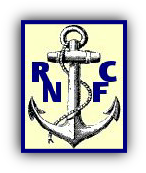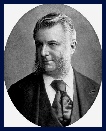

History of Cordite Production
The invention of smokeless powders, which includes Cordite, developed from the production of nitrated organic materials such as nitroglycerine or nitrocellulose (or guncotton) in the mid 19th century. Both these were powerful explosives and unsuitable as propellants.
Attempts were made to tame the two and, in 1886, a Frenchman, Vieille, produced a solvent modified derivative of guncotton with a reduced rate of burning which made it suitable as a propellant. This was known as Poudre B.
At much the same time Nobel showed that by gelatinising the nitrated cotton with
nitroglycerine he could also produce a usable propellant. That the two most powerful
explosives then known could be combined to form a slow burning propellant was surprising.
Nobel’s material contained 50- s.
s.
This particular form was developed by Sir Frederick Abel’s laboratory at Woolwich Arsenal and patented in his name and that of Professor J Dewar for the British government. Both were members of the review committee. Nobel’s patent preceded that of Abel and Dewar and he lodged a claim for infringement but there were a number of differences and these proved sufficient to refute Nobel’s claims.
The first production batches were made at the Royal Gunpowder Factory at Waltham Abbey and, under Superintendent Colonel Sir F. L. Nathan RA, the methods of manufacture were worked out and subsequently improved to increase the safety of workers, increase stability of the propellant and lower cost.
The first material produced was known as Cordite Mk 1 and had a content of 37% guncotton, 58% nitroglycerine and 5% mineral jelly. Subsequent use in the Boer War showed significant gun barrel erosion and the formulation was altered to 65% guncotton, 30% nitroglycerine and 5% mineral jelly. This became known as Cordite MD and was the material produced at RNCF in the First World War.
These early versions used a solvent, acetone, to aid the mixing of the two major components. Subsequently in the 1920s a change was made to using an aqueous solution of nitrocellulose which allowed the solvent to be dispensed with. This was known as Cordite SC.
The mineral jelly was originally incorporated to lubricate the gun barrel but, in fact, the jelly was vaporised on ignition but it did have some useful effect in that it reduced the temperature of the burning and this reduces erosion in the barrel. The jelly also improves chemical stability of the Cordite reducing deterioration due to oxidation.
For WWII the formulation was again changed to incorporate Picrite to produce not only a smokeless propellant but also flashless so that guns were less easily detected. This was known as Cordite RDN